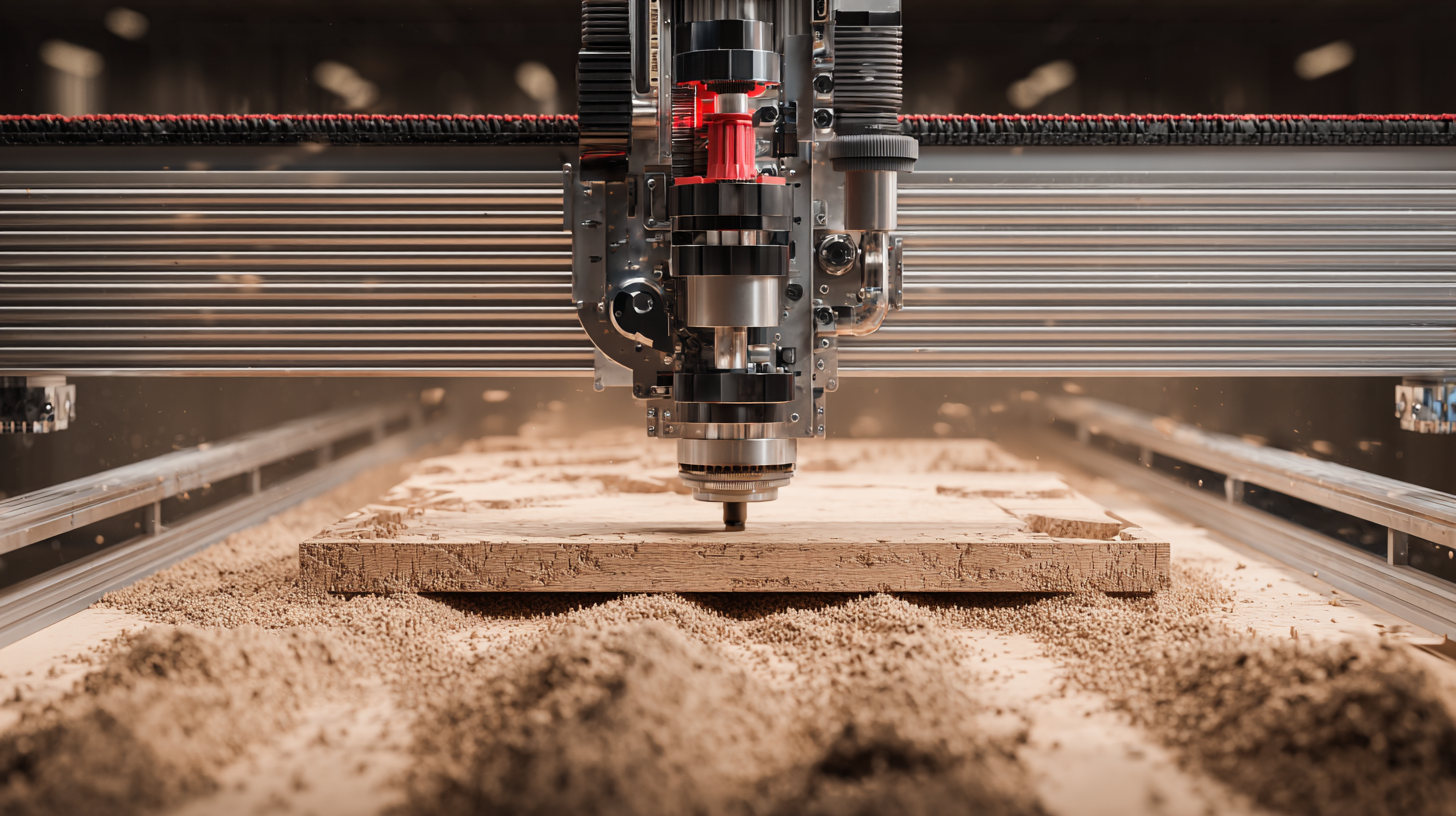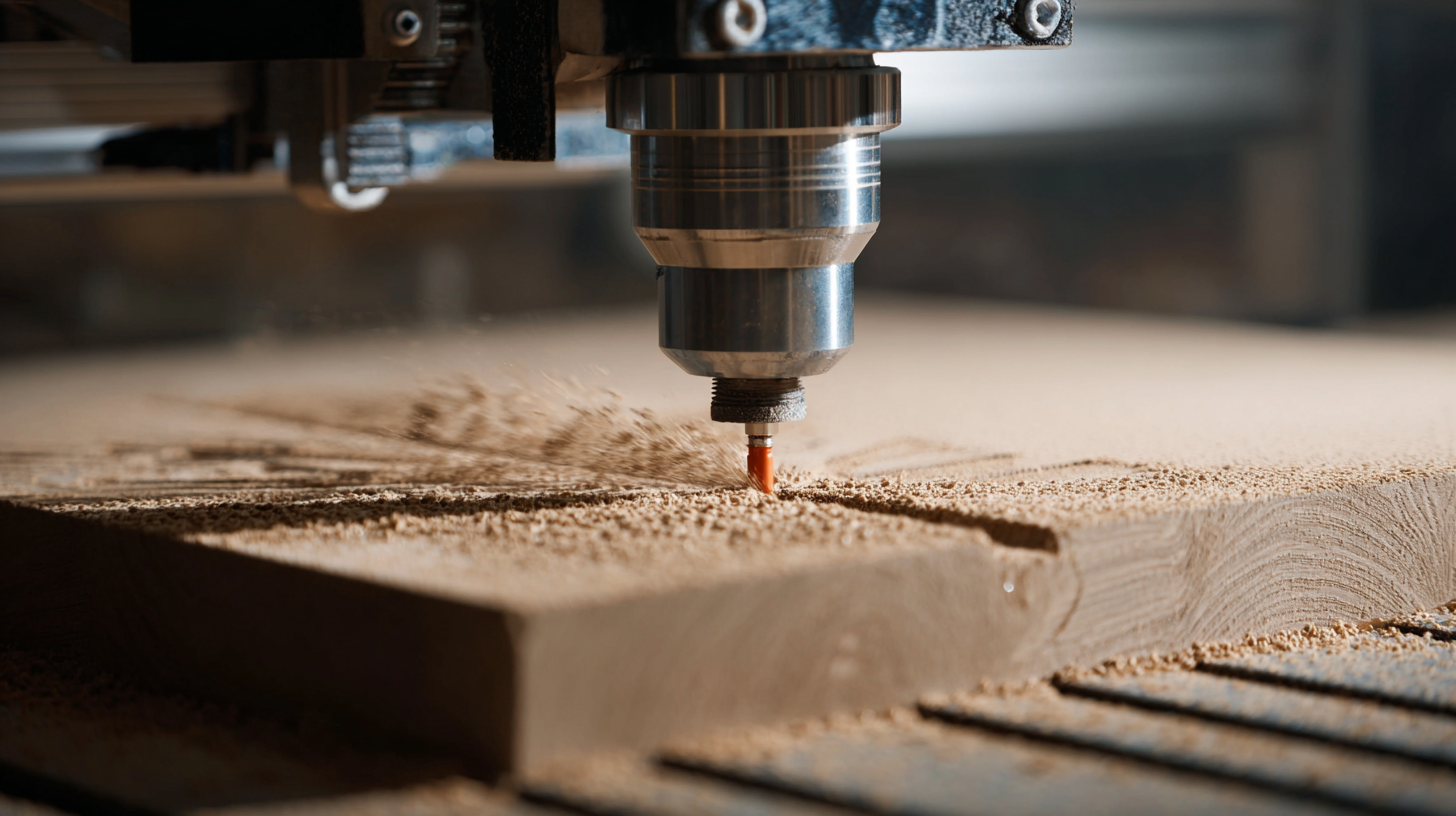Exploring the Unique Features and Applications of Various CNC Router Machine Alternatives
As advancements in technology continue to reshape the manufacturing landscape, the significance of the CNC router machine becomes increasingly apparent. This versatile tool has revolutionized the way we approach design and fabrication, offering unprecedented precision and efficiency across various industries. However, as the demand for more specialized and unique applications grows, so does the exploration of alternative machining solutions that can complement or enhance the capabilities of traditional CNC routers.

In this blog, we will delve into the unique features and applications of these CNC router machine alternatives, examining how they can provide innovative solutions for modern fabrication challenges. From laser cutters to plasma systems, we will uncover the potential of these machines and consider their role in shaping the future of manufacturing, ensuring that creators have the right tools to turn their visions into reality.
Comparing CNC Router Alternatives: Key Features and Specifications
In the realm of machining, CNC routers are celebrated for their precision and versatility, yet several alternatives offer unique features that cater to specific needs. Laser cutters, for instance, are distinguished by their ability to create intricate designs with a level of detail that traditional CNC routers may struggle to achieve. According to a 2022 report by MarketsandMarkets, the global laser cutting market is projected to reach $5.5 billion by 2026, highlighting its increasing prevalence and application across various industries, including signage and custom parts manufacturing.
Another compelling alternative is the waterjet cutter, which operates by using high-pressure water to slice through materials with ease. This method is particularly advantageous for cutting thicker materials and those that are sensitive to heat, as it maintains the integrity of the material without thermal distortion. A report by Research and Markets indicates that the waterjet cutting machine market is expected to grow at a CAGR of 6.4% from 2021 to 2026, driven by sectors like aerospace and automotive. When comparing these alternatives, it becomes clear that while CNC routers remain dominant, the unique advantages offered by laser and waterjet technologies are gaining traction, reshaping the landscape of machining applications.
Identifying Common Issues in CNC Router Machines and Their Alternatives
CNC router machines are known for their precision and versatility across various applications, from woodworking to metalworking. However, users often encounter common issues such as hardware malfunctions, software compatibility, and maintenance challenges. These problems have led users to explore viable alternatives that can provide similar functionality while potentially reducing costs and complexity. Recent trends suggest a shift toward simpler solutions, especially for lightweight applications where the investment in robust CNC machinery may not be justified.

For instance, innovation in wireless router technology now includes features that can act as a cost-effective alternative to Network Attached Storage (NAS), streamlining backup and data sharing processes. According to industry reports, the global CNC router market is expected to grow at a CAGR of 6.5% from 2021 to 2026, suggesting an increasing interest in both traditional and alternative technologies as businesses look for efficiency and ease of use. As users weigh their options, understanding these common issues and exploring alternative solutions becomes imperative, ensuring they choose the best tool for their specific needs.
Practical Applications of Different CNC Router Types in Industries
CNC routers have revolutionized various industries with their precision and versatility. Each type of CNC router offers unique applications tailored to specific materials and project requirements. For instance, a wood CNC router excels in intricately carving furniture and architectural designs, while a metal CNC router is perfect for creating machine parts and structural components. In the signage industry, a hybrid CNC router can handle both wood and acrylic materials, allowing for versatile production of eye-catching signs.

When selecting a CNC router type, it's essential to consider the material you’ll be working with. For wood projects, investing in a high-speed spindle could enhance cutting efficiency and surface finish. Meanwhile, for metal applications, ensure your machine is equipped with the appropriate tooling and cooling systems to manage heat generation.
Tip: Always perform routine maintenance on your CNC router to maintain accuracy and prolong its lifespan. This involves checking the alignment, cleaning the workspace, and ensuring that the cutting tools are sharp and suitable for the specific material. By adhering to these practices, you can optimize your routing processes and achieve superior results across different applications.
Cost-Effective Alternatives to Traditional CNC Routers and Their Benefits
Cost-effective alternatives to traditional CNC routers are becoming increasingly popular in various industries, particularly for small business owners and hobbyists. Market reports indicate that the CNC router market is expected to grow significantly, with a forecasted CAGR of 6.5% from 2021 to 2026, indicating a rising demand for more affordable solutions (Mordor Intelligence). In this landscape, alternatives such as laser cutters, plasma cutters, and even desktop CNC machines are gaining traction for their versatility and lower initial investments.
Laser cutters, for instance, can provide precise cutting and engraving at a fraction of the cost of a full-size CNC router. According to recent studies, laser machines can achieve detailing that traditional routers may struggle with, especially on intricate designs, while also reducing material waste by up to 30% (Technavio). Furthermore, desktop CNC machines have surged in popularity for personal use, allowing users to create everything from bespoke furniture to customized signage at home with minimal setup. Their user-friendly software and compact design make them accessible for users at all skill levels, which is driving innovation and creating new markets within the CNC realm.
Exploring the Unique Features and Applications of Various CNC Router Machine Alternatives - Cost-Effective Alternatives to Traditional CNC Routers and Their Benefits
| Alternative Type | Key Features | Applications | Cost-Effectiveness | Benefits |
|---|---|---|---|---|
| Laser Cutters | High precision, no contact cutting | Sign making, engraving, industrial fabrication | Lower operational cost compared to CNC routers | Minimal material waste, fast processing times |
| Plasma Cutters | Ability to cut thick materials, high speed | Metalworking, automotive repair, construction | Cost-effective for thick materials | Versatile, efficient for large projects |
| 3D Printers | Additive manufacturing, complex designs | Prototyping, custom parts, hobby projects | Low material cost for prototypes | Innovative design possibilities, rapid prototyping |
| Handheld CNC Tools | Portability, easy setup | Carpentry, on-site projects, repairs | Cost-effective for small-scale tasks | Flexibility in applications, easy use |
| Waterjet Cutters | No heat-affected zones, versatile materials | Stone, metal, glass cutting | Cost-efficient for diverse applications | Preservation of material properties, intricate cuts |
Future Trends in CNC Router Technologies and Emerging Alternatives
As CNC router technologies continue to evolve, the industry is witnessing a surge in innovative alternatives that expand the horizons of what is possible in manufacturing and design. These emerging alternatives, such as hybrid machines that combine additive and subtractive processes, are gaining traction, allowing for greater versatility and efficiency in production. By integrating various techniques, manufacturers can create complex geometries that were once difficult or time-consuming to achieve with traditional CNC routers.
Additionally, advancements in software and AI integration are reshaping the landscape of CNC routing. Smart algorithms can now optimize cutting paths in real-time, reducing waste and improving precision. Furthermore, the rise of user-friendly interfaces is enabling even small-scale operators to venture into CNC routing, democratizing access to this technology. As more industries recognize the potential of these alternatives, we can expect a shift in standard practices, opening up numerous possibilities for creative applications in fields ranging from woodworking to aerospace.
Comparison of CNC Router Alternatives in 2023
This chart illustrates the market share of various CNC router alternatives in 2023, providing insight into emerging technologies and trends in the industry.
Siemensstraße 13-15
47608 Geldern
NRW Deutschland
Mail: [email protected]
Head office:
+49 (0) 2831 91021-20
Fax:
+49 (0) 2831 91021-99
SUPPORT and INFO
from 3 p.m. to 6 p.m:
+49 (0) 2831 91021-60
( please ring for a long time )
Monday to Friday
8.00 – 12.30
and 13.00 – 15.00
Visit / collection by appointment only!
➣ Sign up for our newsletter
Benefit from a 20% discount, don’t miss any events and always stay up to date.
To access the actual content, click on the button below. Please note that data will be passed on to third-party providers.
More information







